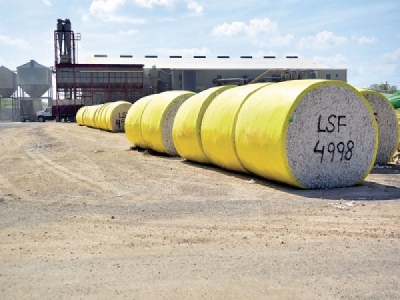
Posted on August 16, 2016
By Rick Kelley, Valley Morning Star
The Port of Harlingen needs more money.
Citing higher operating and infrastructure costs, port officials are seeking to reinstate a port tax on homeowners that would hand it an extra $1 million a year.
At a meeting of the Harlingen Economic Development Corp. earlier this month, officials at the port made their pitch seeking a resolution of support to present to the Cameron County Commissioners Court to bolster their case for the operations and maintenance tax.
“The port business is highly competitive, and being able to do this allows us to stay relevant, one, and be competitive and able to bring in new industries and businesses,” Port Director Walker Smith told the economic board.
The tax hike, if approved by county commissioners, would be paid by residents in the Harlingen Consolidated Independent School District, the Rio Hondo Independent School District and southern Willacy County.
The tax would amount to two-and-a-half cents per $100 valuation. So on a $100,000 home it would be $25 a year. The Harlingen EDC voted unanimously to approve the resolution of support for the tax.
The tax has been on the books for years, yet was only invoked in the 1940s and the 1980s.
“We did it again 1989,” said Alan Johnson, chair of the Board of Port Commission. “We had to put it back into effect because we had such declining infrastructure.
“We only kept it in effect for about seven years as I recall, and then put it back at zero because our fund balances were enough that we didn’t need to do it, and we felt badly about taking money out of taxpayers’ pockets, so we set it at zero,” Johnson said.
Of the 18 ports in the Texas Ports Association, 13 currently have local tax support and one is supported by a city, Harlingen port officials say.
Even though the Harlingen port has annual gross earnings of around $1.2 million, net operating revenue is only $14,000, which isn’t the kind of financial position that allows port officials to borrow much money, or service any debt if they did.
So 20 years after the operations and maintenance tax was revoked, port officials find themselves in the same boat, or in this case, barge.
“We need to rebuild our infrastructure; we need to rebuild our fund balances,” Johnson added. “So in the event we have a catastrophe out there, we can handle it.”
The problem seems to be mud.
The Port of Harlingen lies 25 miles upstream from the Gulf Intracoastal Waterway on the shallow Arroyo Colorado.
Ocean-going barges, which bring in gas and diesel, sand, cement and fertilizer, and haul out cotton, grain and sugar, have a draft of nine feet.
The depth of the arroyo has to be maintained at an authorized depth of 12 feet to safely allow barge traffic in and out of the port.
The U.S. Army Corps of Engineers is responsible for dredging the Arroyo Colorado from the turning basin at the port to the mouth of the river. The last time the arroyo was fully dredged was years ago, and the cost was $8.5 million.
“We’ve been fortunate to get funds as we needed them to do dredging in the Arroyo Colorado, but it’s only hot-spot dredging,” Johnson said. “The corps will come in, survey the channel, say ‘OK you’re shoaled into nine feet here, we need to get you back down to the authorized depth of 12 feet.’
“They’ll cut that little bit out, and that’s all we get,” Johnson added. “The channel hasn’t been totally dredged in many, many, many years, and that’s going to have to come up and be done sooner or later to keep the channel navigable.
“And you’re talking a lot of money.”
The problem now, both Johnson and Smith say, is the corps has its own funding issues.
Smith said support from the corps on paying for dredging operations has been waning, with the corps pushing what it calls new public-private partnerships to fund dredging of navigable commercial waterways.
“In other words, we’re going to have to share in the cost of the dredging from the mouth of the arroyo the full 25 miles up to the turning basin,” Smith said.
Last year port officials received $1.6 million for dredging, and say they were lucky to get it. They tied it to a corps dredge cycle of the Gulf Intracoastal Waterway, saving around $1.5 million in total dredging costs.
A corps spokesperson did not return calls seeking comment on the issue last week.
But Port of Harlingen officials aren’t just at odds with the federal government.
They’re fighting nature itself.
The unusually heavy rains of the past couple of years have increased siltation of the Arroyo Colorado, they say, making dredging operations even more critical.
The arroyo is pretty much a drain ditch from where the Rio Grande splits near Mission for 90 miles to its mouth at the Gulf Intracoastal Waterway. As the silt flows down the arroyo, it looks for a place to settle.
That place would be the Port of Harlingen’s turning basin.
“The turning basin, the authorized depth, is 14 (feet) plus two,” Smith said. “The maintenance depth is 14 and they’ll do an extra depth of two feet, but we just haven’t had the money to be able to do that.”
Source: Valley Morning Star





